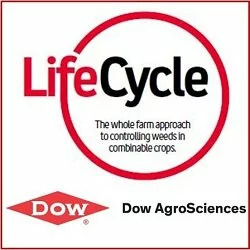Miscanthus – A Miracle Crop or a Touch of Madness
My last two blogs have covered the most critical time of year for us – our miscanthus harvest, so now I probably need to explain why we started the move into growing miscanthus ten years ago.
Up until 1985 my grandfather and father had farmed a 430 acre mixed beef / sheep and arable farm in Warwickshire. Our rotation here had been a traditional wheat / barley / oats / beans and OSR in varying proportions, on a heavy clay soil.
After my grandfather’s death my parents took the opportunity to move to a 500 acre farm in Shropshire, leaving behind the stock element of farming and becoming a wholly arable farm – except for a few ponies! This farm came with both sugar beet and potato quotas and was split between peat and sandy soils. We continued to farm this again on a traditional rotation, occasionally trialling different crops such as linseed and sunflowers, until around 1993 when, due to ill health, my father undertook a contract farming agreement. This continued until 2004 when, as a family, the decision was taken to move over to biofuels.
Why did we change crops? The arable and potato prices dropped and it became necessary to do something different with the marginal fields that were not profitable within the contact farming agreement. We took these fields back in hand and after researching different options decided to move to miscanthus, eventually coming out of the contact farming agreement and committing the whole arable area to it. By bringing the whole farm into miscanthus over a period of about five years it was easier to weather the fact that your first saleable crop isn’t produced until year 3.
Our peat land lies very wet with a little rain and where it is sand it can become arid in a short space of time. The peat land is an agronomists dream as it provides a constant source of weeds in need of managing, gaining a consistent yield at harvest can involve a lot of investment in sprays and fertilisers and on occasions all for a crop you can’t get in – in effect you ‘buy your crop yield’. Additionally, we were looking for a low maintenance crop that could be managed by my father single-handed. Miscanthus answered a number of these points:-
1) It was used to living and thriving in wet and dry conditions.
2) After planting, it’s in the ground for 20 years before it needs to be replanted.
3) It requires spraying in its first year to help it gain establishment but after that its own leaf fall acts as mulch and very little chemical intervention is required.
4) Planting and harvest are done by contractors, being outside of the traditional harvest time finding a Heston baler in March is not an issue.
All of our miscanthus was planted under the Energy Crop Scheme which helped significantly with the cost of planting. We currently sell our crop under contract, a year at a time and this year it is going to IEC, who use it for chicken bedding and biofuel. There are a number of other companies in the UK that take miscanthus for pelleting for use in biomass boilers; some are even offering index linked payments for 10 year contracts.
So, what are the benefits we have from this? Well, it allows the farm to continue to be farmed as a working farm (and therefore maintains the tax advantages this brings), with very low input costs after establishment; the soil structure is improved, weeds reduced, in particular blackgrass and it still qualifies for the Single Farm Payment. It requires minimal labour input, while increasing the diversity of bird life and it holds pheasants well as it is warm within the canes.
What are the disadvantages? – beating a 40 acre field of miscanthus is not the best of experiences if you are 5’6” unless there are rides cut in it!
In short, it’s a crop that works for our family on our farm. I am sure it’s not everyone’s cup of tea but there are certainly some merits in looking at it on less productive land and considering it as part of a long term rotation.
So are we mad?
 Write TWO product reviews on Farmers Review and
Write TWO product reviews on Farmers Review and










mdt
Jun 04, 2014 05:42 PM
Very interesting blog helen, we also do miscanthus we started in 2005-6. Our miscanthus is grown on our rubbish land which had been setaside for years till the grants came for miscanthus so thought give it a try. Works well really for us as it covers the land like you say and stops rubbish growing, also lucky in the fact that we are within the drax power station area. As for been mad?? Nah you seem to have your head screwed on tight! It works for you.
Helen Holman
Jun 05, 2014 08:15 AM
Hi, Thank you for your comments, its great to find another grower!